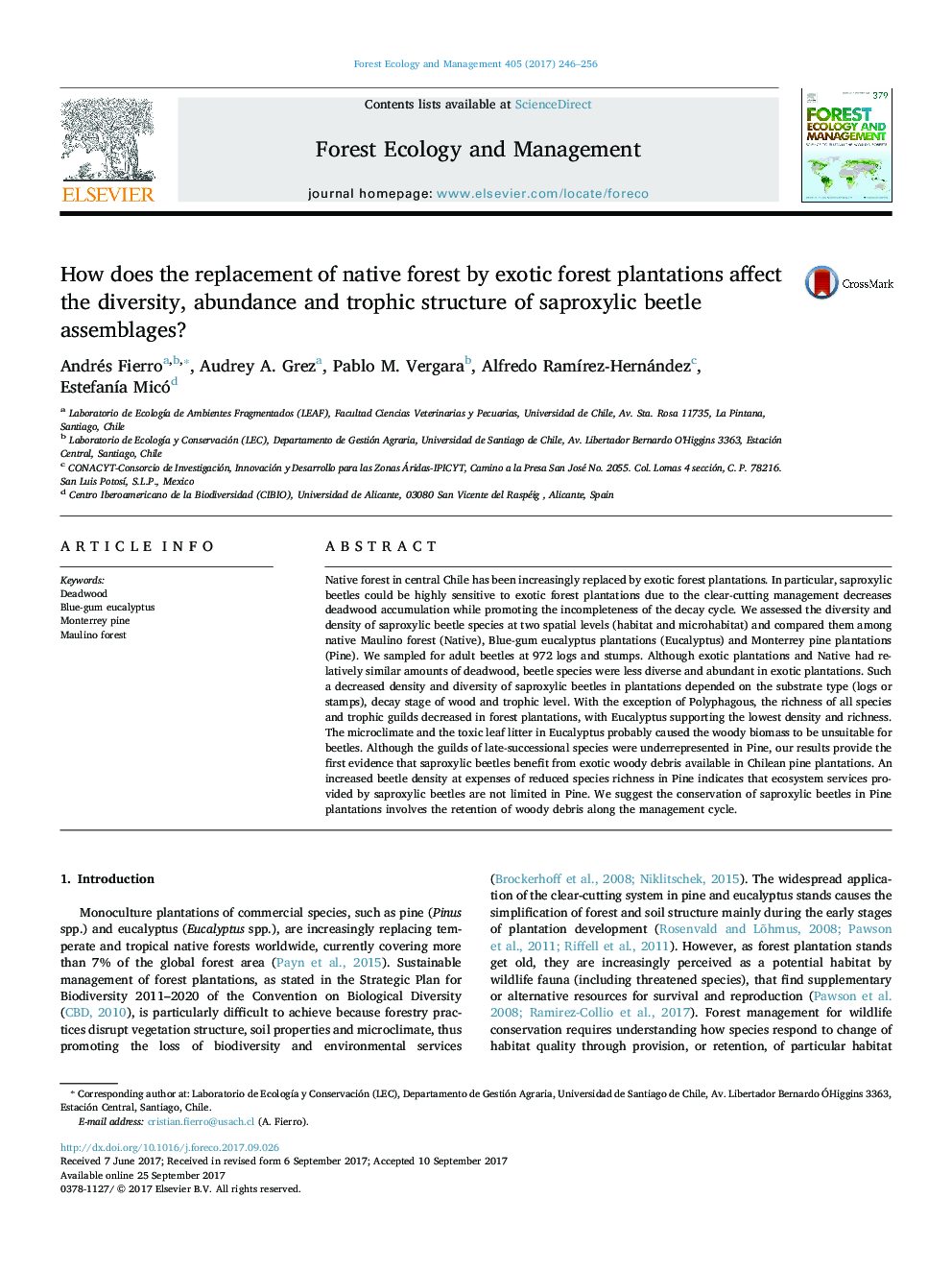| کد مقاله | کد نشریه | سال انتشار | مقاله انگلیسی | نسخه تمام متن |
|---|---|---|---|---|
| 6459085 | 1421353 | 2017 | 11 صفحه PDF | دانلود رایگان |
- Saproxylic beetle species were assessed at 972 logs and stumps.
- Exotic plantations and native forest had similar amounts of deadwood.
- Beetle species were less diverse and abundant in exotic plantations.
- Density of beetles depended on the substrate, decay stage of wood and trophic level.
- Eucalyptus supported the lowest density and richness.
Native forest in central Chile has been increasingly replaced by exotic forest plantations. In particular, saproxylic beetles could be highly sensitive to exotic forest plantations due to the clear-cutting management decreases deadwood accumulation while promoting the incompleteness of the decay cycle. We assessed the diversity and density of saproxylic beetle species at two spatial levels (habitat and microhabitat) and compared them among native Maulino forest (Native), Blue-gum eucalyptus plantations (Eucalyptus) and Monterrey pine plantations (Pine). We sampled for adult beetles at 972 logs and stumps. Although exotic plantations and Native had relatively similar amounts of deadwood, beetle species were less diverse and abundant in exotic plantations. Such a decreased density and diversity of saproxylic beetles in plantations depended on the substrate type (logs or stamps), decay stage of wood and trophic level. With the exception of Polyphagous, the richness of all species and trophic guilds decreased in forest plantations, with Eucalyptus supporting the lowest density and richness. The microclimate and the toxic leaf litter in Eucalyptus probably caused the woody biomass to be unsuitable for beetles. Although the guilds of late-successional species were underrepresented in Pine, our results provide the first evidence that saproxylic beetles benefit from exotic woody debris available in Chilean pine plantations. An increased beetle density at expenses of reduced species richness in Pine indicates that ecosystem services provided by saproxylic beetles are not limited in Pine. We suggest the conservation of saproxylic beetles in Pine plantations involves the retention of woody debris along the management cycle.
Journal: Forest Ecology and Management - Volume 405, 1 December 2017, Pages 246-256
